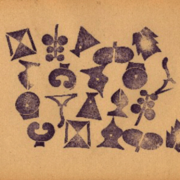Introduction, Narcissism and group
Sigmund Freud, in “Totem and Taboo” (1912-13) and in “ Psychology of the masses and Ego analysis” (1921) provided us with ideas in order to approach the complex theme of relationships between narcissism and group. It is known as Freud made use of Darwin’s hypothesis about the origins of human society, so he described a primeval horde, dominated by a strong male, put together by libidinal relationships (1912). Focusing on the identification processes which happen between horde members and the idealized leader, Freud affirmed that the process of identification since the beginning had been intrinsically ambivalent and could not even cause any metaphoric version and a cannibal incorporation and distribution of the loved object. Such a dominating person could be “absolutely narcissistic” and “self sufficient”. This figure might have the nature of the leader who, doesn’t love the members of the mass, while these last ones have often the illusion about being loved from their primeval father and sob they are submitted to his authority. Freud (1921) affirmed – quoting ironically Read more

